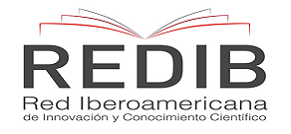Effect of an educational curriculum with fixed and changeable sequential methods on the accuracy of handball skills in 14-15 years old players
Keywords:
Educational Curriculum, Fixed Sequential Method, Changeable Sequential Method, Handball SkillsAbstract
The aim of this study was to prepare special educational exercises using fixed and changeable sequential methods and evaluate their impact on improving the accuracy of basic handball skills in players aged 14–15 years. The researchers employed the experimental method. The research sample consisted of 24 players from the specialized handball school in the Karbala governorate, Iraq, aged 14–15 years. These players were randomly selected using the "pumpkin method" and divided equally into two experimental groups: the fixed sequential group (N=12) and the changeable sequential group (N=12). The following tests were used: passing accuracy test, shooting-from-the-jump skill test, and dribbling skill test. The application of both the fixed and changeable sequential exercise methods led to improvements in accuracy in performing basic handball skills (passing, shooting, and dribbling), as results from the pre- and post-tests for both groups showed statistically significant differences (p<0.05). The second experimental group, which practiced special exercises using the changeable sequential method, outperformed the first group, which practiced with the fixed sequential method (p<0.05). Exercises from the changeable sequential method, tailored to the capabilities and levels of learners, can be particularly effective in the early stages of initial preparation. Further studies are needed to explore various modern learning methods to enhance and develop skillful performance in handball.
Downloads
References
Al-Heila, M. M. (1999). Instructional design theory and practice. Al-Masira Publishing House.
Allawi, M. H. (1971). An introduction to sports educational psychology. Dar Al Maaref.
El-Din, T. H., & others. (2006). Motor learning and motor control. Al-Kitab Center for Publishing.
Hamza, M. (2019). The effect of a curriculum for the bronze level of the Danish school in teaching the basic skills of handball players in specialized schools (Unpublished master's thesis). College of Physical Education and Sports Sciences, University of Kufa.
Kamash, Y. L. (2000). Basic skills in football (education - training). Gulf House for Printing.
Sabr, Q. L. (2012). Topics in kinetic learning. Dar Al-Raq for Printing. (Original work published 1971)
Schmidt, A. R. (1991). Motor learning and performance. Human Kinetics.
Downloads
Published
How to Cite
Issue
Section
License
Copyright and Licensing
For all articles published in Atena Journals, copyright is retained by the authors. Articles are licensed under an open access Creative Commons CC BY 4.0 license, meaning that anyone may download and read the paper for free. In addition, the article may be reused and quoted provided that the original published version is cited. These conditions allow for maximum use and exposure of the work, while ensuring that the authors receive proper credit.
Reproducing Published Material from other Publishers
It is absolutely essential that authors obtain permission to reproduce any published material (figures, schemes, tables or any extract of a text) which does not fall into the public domain, or for which they do not hold the copyright. Permission should be requested by the authors from the copyrightholder (usually the Publisher, please refer to the imprint of the individual publications to identify the copyrightholder).
Permission is required for:
- Your own works published by other Publishers and for which you did not retain copyright.
- Substantial extracts from anyones' works or a series of works.
- Use of Tables, Graphs, Charts, Schemes and Artworks if they are unaltered or slightly modified.
- Photographs for which you do not hold copyright.
Permission is not required for:
- Reconstruction of your own table with data already published elsewhere. Please notice that in this case you must cite the source of the data in the form of either "Data from..." or "Adapted from...".
- Reasonably short quotes are considered fair use and therefore do not require permission.
- Graphs, Charts, Schemes and Artworks that are completely redrawn by the authors and significantly changed beyond recognition do not require permission.
Obtaining Permission
In order to avoid unnecessary delays in the publication process, you should start obtaining permissions as early as possible. If in any doubt about the copyright, apply for permission. Atena Journals cannot publish material from other publications without permission.
The copyright holder may give you instructions on the form of acknowledgement to be followed; otherwise follow the style: "Reproduced with permission from [author], [book/journal title]; published by [publisher], [year].' at the end of the caption of the Table, Figure or Scheme.














